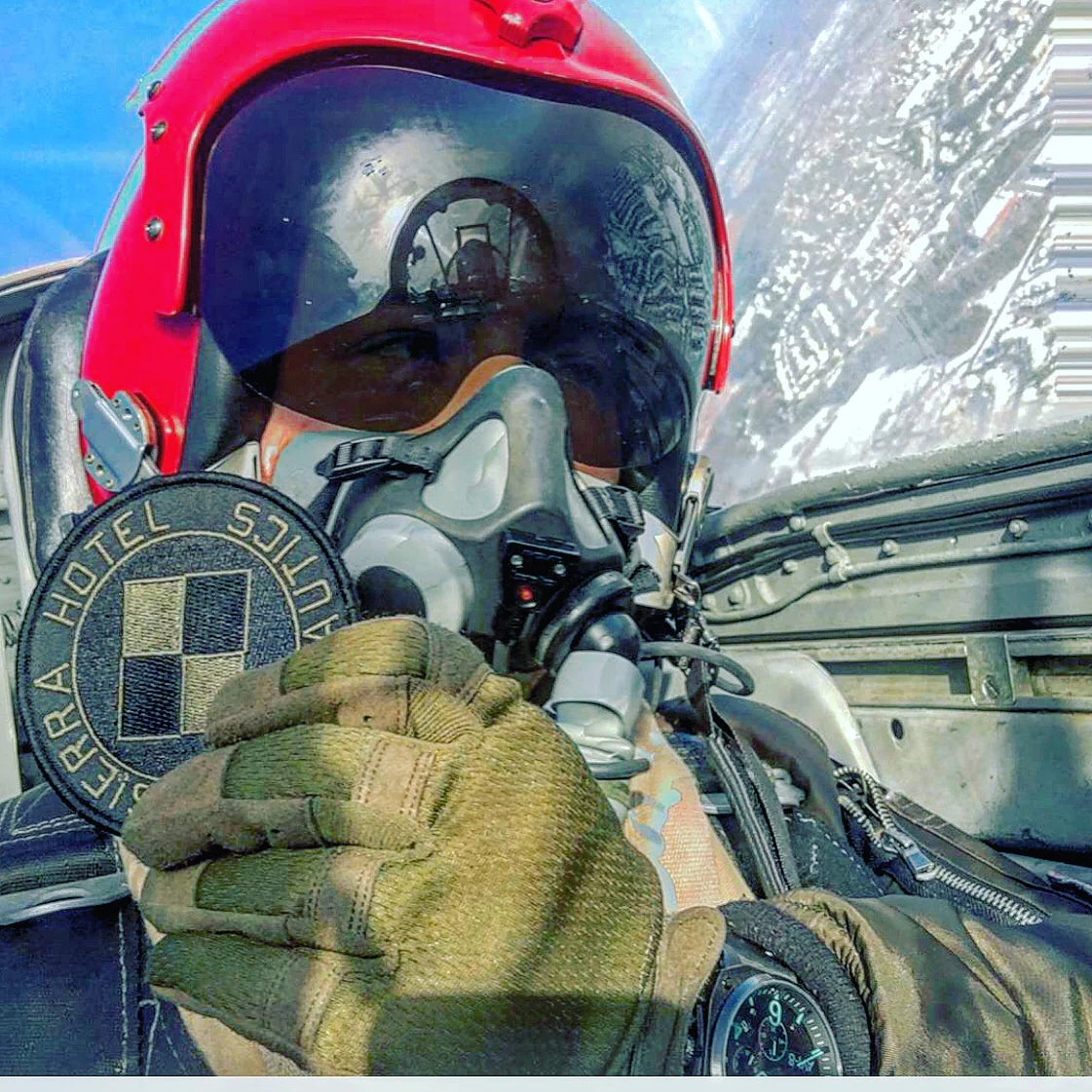The Hitchhiker

December 20th, 1962, NASA research pilot Milton O. Thompson climbed into a NASA Lockheed JF-104A-10-LO Starfighter, 56-0749, c/n 183-1037, for the purpose of making an X-15 weather evaluation flight. Milton was setting up for a simulated X-15 approach at Rogers Dry Lake, Edwards Air Force Base, California, when his Starfighter experienced an asymmetric flap condition that resulted in an uncommanded roll.

Thompson attempted to resolve the problem by repeatedly cycling the roll and yaw dampers, flap-selector switch and speed brakes, but to no avail...
Thompson ejected inverted at 18,000 feet after four complete rolls. The Starfighter slams into the ground nose first and explodes on the Edwards bombing range floor.
NASA Flight Operations chief Joe Vensel was speeding to the crash site expecting the worst of the worst, as there was no radio communication from the pilot that he was ejecting... when he noticed someone waiting by the side of the road.

The man trying to hitch a ride was none other than NASA test pilot Milton O. Thompson, who had descended safely under a good chute and simply walked to the nearby road where he was fortuitusly found by Joe Vensel. (Screenshot from "The RIght Stuff" for effect...because its kind of perfect!}
Hi Honey...I finished the day early and hitched a ride home with Joe.
All in a day's work...
All in a day's work...
Don't worry about Milton, he got back in the air and went on to test-fly the lightweight plywood and steel-tubing prototype NASA M2-F1, which flew as a glider after being released from an R4D tow plane. Milton flew it a total of 47 times and also made the first five flights of the all-metal Northrop M2-F2.
The M2-F2 is also the very same aircraft whos horrific crash was featured in the begining of each episode of "The Six Million Dollar Man"
Thompson also became one of only 12 NASA, Air Force, and Navy pilots to fly the famed and notorious North American X-15 rocket-powered research aircraft on October 29, 1963, only 74 days after his first Lifting Body flight.
Milton flew the X-15 a total of 14 times during the following two years, reaching an incredible maximum speed of 3,712 mph (Mach 5.48) and a peak altitude of 214,100 feet.
Milton flew the X-15 a total of 14 times during the following two years, reaching an incredible maximum speed of 3,712 mph (Mach 5.48) and a peak altitude of 214,100 feet.

Thompson hung up his wings in 1967 and went on to become a member of NASA's Space Transportation System Technology Steering Committee during the 1970s. His extensive experience as a NASA Test Pilot and his countless experimental unpowered flights led to the push to design the future Space Shuttle Orbiters as a glider rather than increased weight required to support air-breathing engines for the orbiter's powered return to Earth.
Milton's Space Transportation System Technology Steering Committee work earned him NASA's highest award, the Distinguished Service Medal.
Milton's Space Transportation System Technology Steering Committee work earned him NASA's highest award, the Distinguished Service Medal.
Milton became NASA Chief of Research Projects and was appointed NASA's Chief Engineer, where he retained that position until his death on August 6, 1993, at the age of 67.
That evening, Milton was scheduled to be at a NASA dinner in his honor. At the news of his passing, the dinner event proceeded. Not as an award dinner, but as a memorial to Milton Orville Thompson, American naval officer, aviator, engineer, and NASA research pilot.
That evening, Milton was scheduled to be at a NASA dinner in his honor. At the news of his passing, the dinner event proceeded. Not as an award dinner, but as a memorial to Milton Orville Thompson, American naval officer, aviator, engineer, and NASA research pilot.














Leave a comment